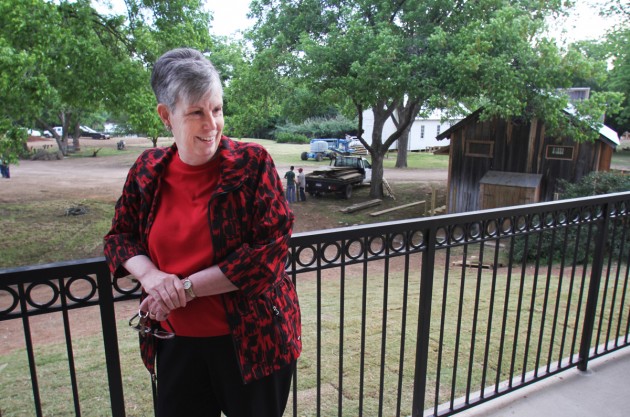

Matt Hellman | Lariat Photo Editor
By Daniel C. Houston
Staff Writer
The Gov. Bill and Vara Daniel Historic Village will reopen to the public May 12 after two years of renovations, according to university sources.
The university is wrapping up a renovation project during which, among other things, it has added insulation, air conditioning and heating units to the historic buildings once owned by Gov. Bill Daniel and his wife Vara Martin Daniel.
The Daniels donated the buildings to Baylor in 1986, along with thousands of artifacts, moving them by caravan from their original home in Liberty, according to a Mayborn Museum Complex press release.
Dr. Ellie Caston, director of Mayborn, said the renovations were necessary to protect the artifacts from heat and cold, and to make the buildings more accessible to wheelchair and stroller users.
In other words, she said, it’s about bringing the facilities up to professional standards.
“This is really a dream-come-true for us because we now feel that the Mayborn Museum Complex is complete,” Caston said. “We just had to get this figured out, and with the help of a lot of people, Baylor’s done it.”
The Mayborn’s indoor facilities, constructed in 2004, were intended to merge seamlessly with the historic village, but Caston said that goal was not truly realized until this project’s completion with a new entrance connecting the two areas.
“We found that there’s so much to do inside, that people didn’t quite get the connection between the two, and so we didn’t have as many people [visit the historic village],” Caston said. “So now we created a logical connection that’s going to make people want to do it all.”
The new climate control units in the buildings are hidden from view to preserve their historic facades, Caston said. She believes the value of the historic village has been enhanced by the new changes.
“The value of an artifact — and in this case, a building with its artifacts — is in its use,” Caston said. “So the more things we can put in these buildings for more people to see creates more value. Museums are no longer just repositories of artifacts that we keep hidden away; we have to figure out different ways to bring them out, and this is how we do it.”
Although most of the changes did not involve much structural tampering with the buildings, construction crews temporarily removed the exterior and chimney of the planter’s house to replace the foundation. The exterior will be restored upon completion, Caston said.
The historic village will also include new features when it opens May 12. Construction crews have installed a new pavilion with picnic tables and a new facility displaying horse-drawn vehicles from the 19th century.
The entryway to the Mayborn indoor facilities will also include two new touch screen kiosks with information on the Daniels family and an interactive map of the historic village.
Also new to the exhibit will be the option of cell-phone tours of each buildings, according to Rebecca Tucker-Nall, changing exhibits manager.
“These [cell-phone tours] are going to be first-person interpretations,” Tucker-Nall said, adding staff members at the Mayborn volunteered to voice the characters. “So you’re actually going to hear from the school teacher at the school, and she’s going to tell you what her daily agenda is.”
Other characters on the cell-phone tour will include the commissary owner, the postman, the preacher, and the children.





